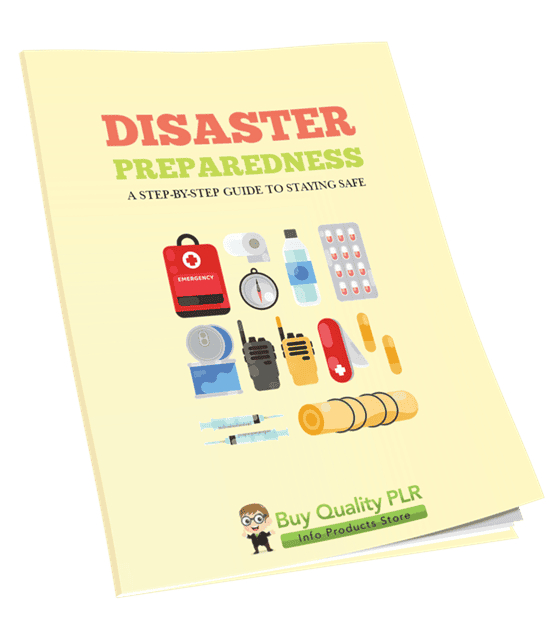
5 Long Form Dog Health and Dog Care PLR Articles 15k Words
in Animal PLR Articles , Dog Training PLR , Dog Training PLR Articles , Dogs PLR Articles , Long Form PLR Articles , Pets and Animals PLR Articles , Pets PLR , PLR Article Packs , PLR Articles , Private Label Rights ProductsChoose Your Desired Option(s)
has been added to your cart!
have been added to your cart!
#doghealth #dogcare #petwellness #caninehealth #petnutrition #doggrooming #vetcare #healthydogs #dogexercise #puppycare #seniordogcare #dogdiet
Are you tired of finding PLR articles that are only 500–800 words long and leave you underwhelmed by the amount of content provided?
Today, we have the perfect solution for you…
It’s called long-form PLR articles!
What are long-form PLR articles?
They are PLR articles that are over 2000 words each, and you can use them for pretty much anything you’d like, except sell them as PLR.
To see the license terms of our long-form PLR article packs, scroll to the bottom of this page.
Introducing…
5 Long Form Dog Health and Dog Care PLR Articles 15k Words

Here are the article titles and word count for each article:
- From Bowls to Bellies: Unveiling the Secrets of Digestive Care Dog Food – (3029 words)
- Training with Tail Wags: Finding the Right Dog Care Training Collar – (2965 words)
- Glowing Coats and Wagging Tails: Unveiling the Basics of Dog Skin Care – (2927 words)
- Pearly Whites and Happy Barks: A Guide to Dog Dental Care – (3038 words)
- TLC for Your Furry Friend: Caring for Your Dog After Neuter Surgery – (3359 words)
Sample Article:
- Puppy Love How to Take Care of Your New Dog Companion – (2841 words)
All long-form PLR articles are provided in Word Doc format.
Here’s a sample article so you know what to expect and can see the quality of the long form PLR content before buying:
This is a sample long-form PLR article from https://www.buyqualityplr.com/plr-store/products/long-form-plr-articles/
Puppy Love: How to Take Care of Your New Dog Companion
Bringing home, a new furry friend is a joyous and exciting experience, but it also comes with a great deal of responsibility.
From training and socialization to grooming and vet care, taking care of a new dog requires careful preparation and dedication.
In this blog post, we will explore the essential tips and guidelines for providing your new dog companion with the care and love they deserve.
So, let’s dive into the world of puppy love and discover how to make your new dog’s transition into your home a smooth and fulfilling one.
Introduction
Bringing home a new furry friend can be an exciting and rewarding experience. However, taking care of a dog requires time, effort, and responsibility. In this article, we will explore the joys of having a dog companion and discuss important factors to consider before bringing one home.
Why getting a dog is a great decision
- Unconditional Love: Dogs are known for their unwavering loyalty and affection. They provide companionship and emotional support, making them excellent additions to any family.
- Improved Health: Owning a dog can have numerous health benefits. Regular walks and playtime with your furry friend can help you stay active and reduce stress levels. Studies have shown that dog owners have lower blood pressure and cholesterol levels.
- Teaching Responsibility: Taking care of a dog teaches children and adults alike about responsibility, empathy, and compassion. It provides an opportunity to learn valuable life skills.
Important factors to consider before bringing a new dog home
- Lifestyle: Assess your lifestyle and determine if you have the time, energy, and resources to properly care for a dog. Consider factors such as exercise needs, grooming requirements, and potential allergies.
- Breed Selection: Different breeds have different temperaments, energy levels, and care requirements. Research breeds that align with your lifestyle and preferences to ensure a good match.
- Budget: Dogs require regular veterinary care, food, grooming, toys, and other supplies. Consider the financial commitment involved in providing proper care for your new companion.
- Training and socialization: Dogs need training to become well-behaved members of society. Invest time in obedience training and socialization to ensure your dog is comfortable around people and other animals.
- Commitment: Dogs are lifelong companions, and their well-being should be a top priority. Ensure you are ready for the long-term commitment of caring for a dog before bringing one home.
By considering these factors and providing a loving and nurturing environment, you can create a strong bond with your new dog companion and enjoy many happy years together.
Preparing for your new dog
Bringing a new dog into your home is an exciting and rewarding experience. However, it’s important to be prepared and provide the best care for your new furry friend. Here are some key points to consider when taking care of your new dog companion.
Creating a safe and comfortable space for your dog
- Designate a specific area: Set up a designated space in your home where your dog can feel safe and secure. This could be a crate, a dog bed, or a specific room.
- Puppy-proofing: Ensure that the designated area and the rest of your home are safe for your new dog. Remove any hazardous objects or substances that could harm them, such as toxic plants, electrical cords, or small objects they could swallow.
- Provide comfort: Make sure your dog has access to clean water, appropriate bedding, and toys to keep them entertained.
Essential supplies for your new dog
- Dog food: Choose a high-quality dog food that is appropriate for your dog’s age, size, and breed. Consult with your veterinarian for recommendations.
- Food and water bowls: Invest in sturdy and easy-to-clean bowls for feeding and watering your dog.
- Grooming supplies: Depending on your dog’s coat type, you may need brushes or combs, nail clippers, and shampoo.
Choosing the right type of dog for your lifestyle
- Evaluate your lifestyle. Consider factors such as activity level, living arrangements, and time availability before choosing a dog breed. Some breeds require more exercise and attention than others.
- Research breeds: Learn about different dog breeds and their characteristics to find a dog that matches your lifestyle and preferences.
- Consider adoption: There are many wonderful dogs available for adoption at shelters and rescue organizations. Consider giving a shelter dog a loving home.
Remember, taking care of a new dog requires time, patience, and commitment. By providing a safe and comfortable space, essential supplies, and choosing the right dog for your lifestyle, you can ensure a happy and healthy life for your new furry companion.
Training and socialization
Bringing home a new furry friend is an exciting and joyful experience. However, it’s important to remember that owning a dog comes with responsibilities, including training and socialization. By investing time and effort in these areas, you can ensure a happy and well-adjusted companion for years to come.
Basic obedience training for your dog
- Start early: Begin training your new dog as soon as you bring them home. Puppies have a critical learning period between 3 and 14 weeks, during which they are more receptive to training.
- Use positive reinforcement: reward-based training methods, such as treats and praise, are effective in teaching your dog basic commands like sit, stay, and come. Avoid punishment-based techniques, as they can lead to fear and aggression.
- Be consistent: Establish a routine and stick to it. Consistency is key to reinforcing good behavior and preventing confusion.
Introducing your dog to new people and other animals
- Socialize early: Expose your dog to different environments, people, and animals from an early age. This will help them develop positive associations and reduce the likelihood of fear or aggression later on.
- Take it slow. Introduce your dog to new people and animals gradually, using controlled environments. Allow them to approach at their own pace and provide positive reinforcement for calm behavior.
- Supervise interactions: Always supervise interactions between your dog and unfamiliar people or animals. This ensures everyone’s safety and allows you to intervene if necessary.
Addressing common behavioral issues
- Potty training: Establish a consistent schedule for bathroom breaks and reward your dog for going to the appropriate spot. Be patient and consistent in your training approach.
- Chewing and biting: Provide appropriate chew toys and redirect your dog’s attention when they engage in inappropriate chewing or biting. Consistency and positive reinforcement are key to addressing these behaviors.
- Separation anxiety: Gradually acclimate your dog to being alone by starting with short periods of time and gradually increasing. Provide them with interactive toys or puzzles to keep them occupied.
Remember, training and socialization are ongoing processes. Consistency, patience, and positive reinforcement will help you build a strong bond with your new furry companion.
Feeding and nutrition
Welcoming a new furry friend into your home is an exciting and rewarding experience. However, it’s important to ensure that you provide proper care and nutrition to keep your new dog companion healthy and happy. Here are some key points to consider when it comes to feeding and nutrition for your new pup:
Choosing the right food for your dog
- Consider their age and breed. Different dogs have different nutritional needs based on their age, size, and breed. Consult with your veterinarian to determine the best type of food for your specific dog.
- Look for high-quality ingredients. Opt for dog food that contains real meat, whole grains, and natural ingredients. Avoid foods with artificial additives or fillers.
Establishing a feeding schedule and portion control
- Create a consistent feeding schedule. Dogs thrive on routine, so establish regular mealtimes for your pup. This helps with digestion and prevents overeating.
- Control portion sizes: Follow the recommended feeding guidelines provided by the dog food manufacturer. Adjust portion sizes based on your dog’s age, weight, activity level, and overall health.
Understanding dietary needs and potential allergies
- Be aware of common allergens: Some dogs may have allergies or sensitivities to certain ingredients, such as wheat, corn, soy, or specific proteins. Monitor your dog for any signs of allergic reactions and consult with your vet if necessary.
- Consider specialized diets: In some cases, dogs may require specialized diets due to health conditions or allergies. Your veterinarian can recommend appropriate options if needed.
Remember to always provide fresh water for your dog and monitor their weight to ensure they maintain a healthy body condition. Regular visits to the veterinarian can also help ensure your dog’s nutritional needs are being met.
By prioritizing proper nutrition and feeding practices, you can help your new dog companion thrive and enjoy a long and happy life by your side.
Exercise and physical activity
Welcoming a new furry friend into your home is an exciting and joyful experience. However, it’s important to remember that dogs require regular exercise and physical activity to stay healthy and happy. By incorporating exercise into your dog’s routine, you can ensure they lead a fulfilling life.
The importance of regular exercise for dogs
Just like humans, dogs need regular exercise to maintain their physical and mental well-being. Regular exercise helps prevent obesity, improves cardiovascular health, strengthens muscles and bones, and reduces the risk of certain diseases. It also helps alleviate behavioral issues such as excessive barking, chewing, and digging.
Fun and engaging activities for your dog
There are various fun activities you can engage in with your dog to keep them active and entertained.
- Daily walks: Taking your dog for a walk is not only a great form of exercise but also provides mental stimulation as they explore their surroundings.
- Play fetch: Playing fetch with a ball or Frisbee is an excellent way to engage your dog’s natural chasing instinct while providing a good workout.
- Swimming: If your dog enjoys water, swimming is a low-impact exercise that can help build muscle strength without putting stress on their joints.
- Agility training: Setting up an agility course in your backyard or attending an agility class can provide both physical exercise and mental stimulation for your dog.
Creating a balanced exercise routine
It’s important to create a balanced exercise routine that suits your dog’s age, breed, and energy level. Consider the following tips:
- Vary the activities: Mix up the types of exercises to keep your dog engaged and prevent boredom.
- Start slow. If your dog is not used to regular exercise, gradually increase the duration and intensity to avoid injury.
- Consult with a veterinarian: If you have any concerns about your dog’s exercise needs or limitations, consult with a veterinarian for personalized advice.
Remember, regular exercise is essential for your dog’s overall well-being. By providing them with physical activity and mental stimulation, you can ensure they live a happy and healthy life.
Health and grooming
Bringing home a new furry friend is an exciting and joyful experience. However, taking care of a dog requires more than just cuddles and playtime. To ensure your new companion stays healthy and happy, it’s important to prioritize their health and grooming needs.
Regular veterinary care and vaccinations
One of the first steps in caring for your new dog is to find a trusted veterinarian. Regular checkups are crucial for maintaining your dog’s overall health. During these visits, your vet will perform a thorough examination, administer necessary vaccinations, and provide preventive treatments for fleas, ticks, and heartworms. These routine appointments also allow your vet to monitor your dog’s growth and catch any potential health issues early on.
Proper grooming techniques and tools
Grooming plays a vital role in keeping your dog clean and comfortable. Regular brushing helps remove loose hair, prevents matting, and promotes healthy skin. The type of brush you use will depend on your dog’s coat type. Additionally, regular bathing is necessary to keep your dog smelling fresh and to prevent skin irritations. Be sure to use dog-specific shampoo and rinse thoroughly to avoid any residue.
Identifying common health issues and when to seek professional help
Being aware of common health issues that dogs may face can help you identify potential problems early on. Keep an eye out for signs of illness such as changes in appetite, lethargy, vomiting, diarrhea, or unusual behavior. If you notice any concerning symptoms or if your dog seems unwell, it’s important to seek professional help from your veterinarian. They can provide the necessary diagnosis and treatment options to ensure your dog’s well-being.
Remember, taking care of a new dog companion is a long-term commitment. By prioritizing their health and grooming needs, you can provide them with a happy and fulfilling life as a beloved member of your family.
Building a strong bond with your dog
Welcoming a new furry friend into your home is an exciting and rewarding experience. However, it’s essential to understand that building a strong bond with your dog requires time, effort, and patience. Here are some key points to help you establish a loving and trusting relationship with your new canine companion.
Establishing trust and communication with your dog
- Consistency is key. Dogs thrive on routine, so establish consistent feeding, exercise, and training schedules. This will help your dog feel secure and understand what is expected of them.
- Positive reinforcement: Reward your dog with praise, treats, or playtime when they exhibit desired behaviors. This positive reinforcement helps reinforce good habits and strengthens the bond between you and your dog.
- Effective communication: Dogs rely on body language and vocal cues to understand us. Use clear and consistent commands, gestures, and tones of voice to communicate effectively with your dog.
Engaging in quality playtime and activities together
- Physical exercise: Regular exercise is crucial for a dog’s physical and mental well-being. Take your dog for daily walks or engage in active play sessions to keep them happy and healthy.
- Mental stimulation: Dogs are intelligent creatures that need mental stimulation to prevent boredom and destructive behaviors. Provide puzzle toys, interactive games, or training sessions to challenge their minds.
- Bonding through play: Playtime is not only fun but also an opportunity for bonding. Engage in activities that both you and your dog enjoy, such as fetch, tug-of-war, or hide-and-seek.
Remember, building a strong bond with your dog takes time and patience. Be consistent, use positive reinforcement, and engage in quality playtime and activities together. With love, care, and attention, you and your new dog companion will develop a deep and lasting bond that will bring joy to both of your lives.
Conclusion
Bringing a new puppy into your life is an exciting and rewarding experience. However, it also comes with a great deal of responsibility. By following these tips and guidelines, you can ensure that your new dog companion receives the love, care, and attention they deserve.
Remember to provide a safe and comfortable environment for your puppy, with plenty of toys, bedding, and a designated area for them to rest and play. Establish a consistent feeding schedule and provide a balanced diet that meets their nutritional needs. Regular exercise is crucial for their physical and mental well-being, so make sure to incorporate daily walks or playtime.
Socialization is key to raising a well-rounded and friendly dog. Introduce your puppy to different people, animals, and environments to help them develop good social skills. Training is also essential for teaching your puppy basic commands and proper behavior.
Regular veterinary checkups and vaccinations are vital for your puppy’s health. Schedule appointments with a trusted veterinarian to ensure that your dog companion is up-to-date on vaccinations and receives necessary preventive care.
Lastly, don’t forget to shower your new furry friend with love and affection. Dogs thrive on human companionship, so spend quality time bonding with them through play, cuddles, and positive reinforcement.
Final thoughts and additional resources for dog care
Taking care of a new dog companion requires ongoing learning and adaptation. If you want to delve deeper into the world of dog care, there are plenty of resources available. Consider reading books such as “The Art of Raising a Puppy” by the Monks of New Skete or “The Other End of the Leash” by Patricia McConnell.
Additionally, online communities like forums or social media groups dedicated to dog owners can provide valuable insights and support from experienced pet parents. Don’t hesitate to reach out to local trainers or enroll in obedience classes to enhance your understanding of dog behavior and training techniques.
Remember, the relationship between you and your new dog companion is a lifelong journey. By prioritizing their well-being, providing proper care, and nurturing a loving bond, you can ensure a happy and fulfilling life together.
I hope this guide has provided valuable insights on how to properly care for your new dog companion. Remember, owning a dog is a long-term commitment that requires love, patience, and dedication. If you have any questions or would like to share your own tips and experiences, please leave a comment below. We would love to hear from you!
his is a sample article from BuyQualityPLR.com.
You can find more long-form PLR articles here:
https://www.buyqualityplr.com/plr-store/products/long-form-plr-articles/
has been added to your cart!
have been added to your cart!
Here’s the truth about long-form content:
Google prefers long-form content; they just tend to rank better than shorter articles as they provide better, more detailed answers to people who search on Google.
And if you hired a copywriter to write 2000+ articles, they would charge you $3–$5 per 100 words ($60 per article), which is the going rate for long-form unique articles.
So, a pack of 5 articles of 10,000 words could easily cost you $300 if you hired a copywriter to write unique content for you.
But today, you won’t pay anything near that for these 5 Long-form dog health and dog care PLR Articles .
These articles are available for $19.99; that’s $2 per article!
has been added to your cart!
have been added to your cart!
We are limiting these Dog Health and Dog Care long-form PLR articles to the next 100 customers.
So, you’ve got to act fast if you’d like to get a PLR license to these PLR Dog Health and Dog Care articles today; once 100 licenses are sold, we will be removing them from our store.
Ways You Can Use PLR Articles:
- Blog Posts: Publish PLR articles on your blog to provide valuable content to your readers and drive traffic to your website.
- Social Media Content: Break down PLR articles into shorter snippets and share them on your social media platforms to engage your audience.
- Email Newsletters: Adapt PLR articles for your email newsletters to keep your subscribers informed and provide them with valuable insights.
- Lead Magnets: Transform PLR articles into downloadable guides, reports, or ebooks to offer as lead magnets and grow your email list.
- Content Upgrades: Enhance existing blog posts with relevant PLR articles as content upgrades, providing additional value to your readers.
- Guest Blogging: Rewrite and customize PLR articles to submit as guest posts on other blogs, increasing your visibility and authority.
- Online Courses: Utilize PLR articles as content modules or lessons for creating online courses and sharing your expertise.
- Podcast Episodes: Convert PLR articles into podcast episodes by narrating the content and providing additional insights.
- Video Scripts: Adapt PLR articles into video scripts for creating informative and engaging videos for your YouTube channel or other video platforms.
- Compilation Books: Compile multiple related PLR articles into a comprehensive ebook or print book, offering it as a product or giveaway.
Package Details:
5 Long-form Dog Health and Dog Care PLR Articles (Titles below)
- From Bowls to Bellies: Unveiling the Secrets of Digestive Care Dog Food – (3029 words)
- Training with Tail Wags: Finding the Right Dog Care Training Collar – (2965 words)
- Glowing Coats and Wagging Tails: Unveiling the Basics of Dog Skin Care – (2927 words)
- Pearly Whites and Happy Barks: A Guide to Dog Dental Care – (3038 words)
- TLC for Your Furry Friend: Caring for Your Dog After Neuter Surgery – (3359 words)
Sample Article:
- Puppy Love How to Take Care of Your New Dog Companion – (2841 words)
Total Word Count: (18 159 words)
Bonus Content
Dog Health and Dog Care FAQs – (1086 words)
PLR License Terms: What You Can Do:
- You can use this content on your blog.
- You can edit the content as you wish.
- You can use this content to create ebooks.
- You can use this content to create lead magnets.
- You can use this content to create video courses.
- You can use this content to create videos for YouTube.
- You can use this content to for content marketing.
- You can break the articles up into multiple articles.
- You can use the content for emails.
- You can use the content to create audios.
- You can sell the content in PDF format.
- You can use the content to create coaching courses.
- You can monetize the content with your affiliate links or own products.
- You can charge for access to read this content. For example, a paid ebook, membership site or other paid access content.
- You can translate the content into another language
- You can use the content anywhere you publish content
What you cannot do:
- You can sell PLR to this content.
- If you’re selling this content, it must be in PDF format.
- You CANNOT sell this product with a PLR, MRR or Resell Rights License.
Share Now!












